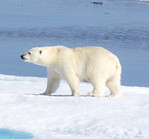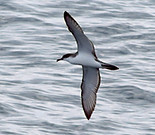


Seabird Movement &
Foraging Ecology
Using a variety of tracking technologies and modelling techniques, we are studying the foraging preferences and migratory behaviour of gadfly petrels that breed on the Norfolk Island Group. This research project includes validating some of the technologies that ecologists worldwide use to track marine animals. Read more here



Trophic Ecology



Understanding the structure of feeding relationships among organisms is key for conserving species and restoring ecosystem integrity in formerly degraded habitats. Using detailed field studies, stable isotope analyses and statistical modelling techniques, we are studying the trophic ecology of some of the world's most unique endemic wildlife. Read more about the Phillip Island Centipede here and here






Storm-Petrel Migration
Storm-petrels are some of the smallest seabirds. Two species nest on remote islands of the west coast of Canada. In partnership with Environment and Climate Change Canada (ECCC), we used small tracking devices and stable isotope signals in feathers to reveal the movement and trophic levels of migrating Fork-tailed and Leach's Storm-petrels that nest on a remote islet in British Columbia. Read more here



Seabird & Marine Mammal Survey



Luke Halpin has extensive experience conducting at-sea fixed-width vessel surveys throughout remote regions of the Pacific and Arctic oceans. Data collected has helped to inform conservation and management of marine species and has produced new records of previously unrecorded species in the Canadian Pacific, including marine birds, mammals, reptiles and fish.



